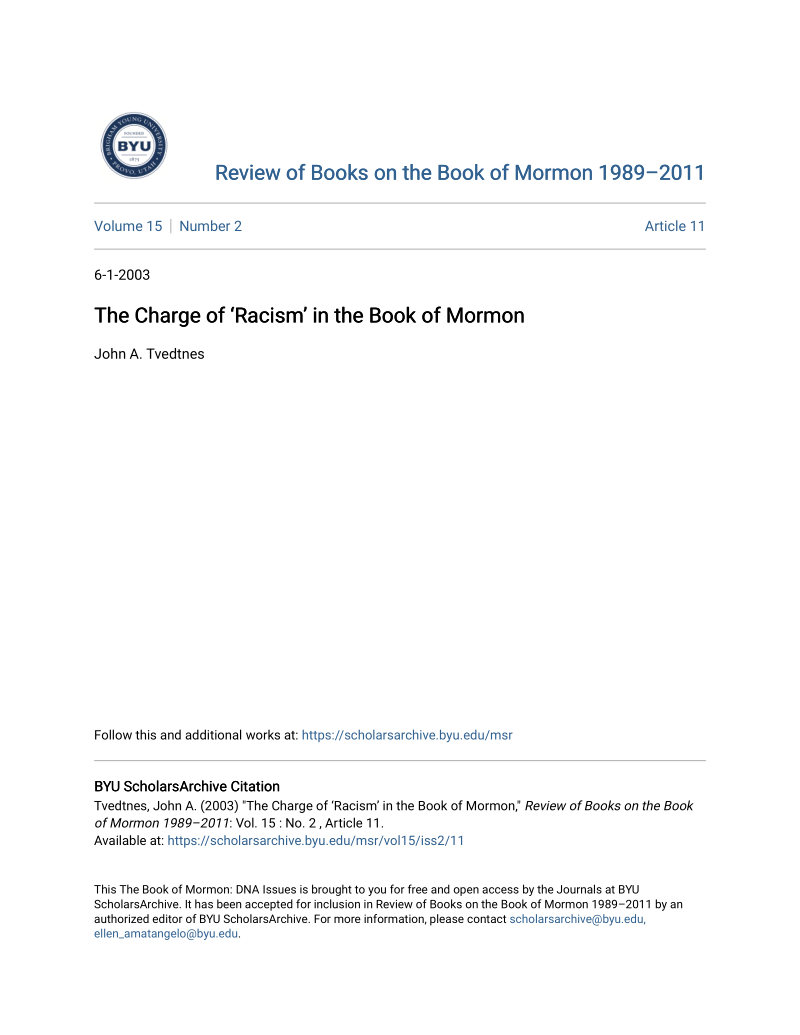John A. Tvedtnes argues that black-and-white imagery in the Book of Mormon is symbolic.
- Type
- Academic / Technical Report
- Hearsay
- Direct
- Reference
John A. Tvedtnes, "The Charge of 'Racism' in the Book of Mormon," FARMS Review 15, no. 2 (2003): 195-196
- Scribe/Publisher
- Foundation for Ancient Research and Mormon Studies
- Audience
- Reading Public
- Transcription
The use of black-and-white imagery to typify purity and righteousness is exemplified in the works of Ephraim of Syria, a fourth century a.d. Old World Christian writer, who commented on Philip’s baptism of the Ethiopian eunuch (Acts 8:26–39) as follows: “The eunuch of Ethiopia upon his chariot saw Philip: the Lamb of Light met the dark man from out of the water. While he was reading, the Ethiopian was baptised and shone with joy, and journeyed on! He made disciples and taught, and out of black men he made men white. And the dark Ethiopic women became pearls for the Son.” One of Ephraim’s poems explains that “bodies that were filled with stains are made white” by means of anointing and baptism. The Qur’an, a seventh-century Semitic text, also speaks of the day of judgment as “the day when some faces will be white and some faces will be black” (3:106). This could be taken as a reference to purity and righteousness on the one hand and impurity and wickedness on the other, or to salvation and damnation, but certainly not to race, since Islam has always been reasonably color-blind. Modern Arabic still uses the idiom sawwada wajhuhu to describe the act of discrediting, dishonoring, or disgracing a person, but its literal meaning is “to blacken the face” of someone.
- Citations in Mormonr Qnas
The B. H. Roberts Foundation is not owned by, operated by, or affiliated with the Church of Jesus Christ of Latter-day Saints.

